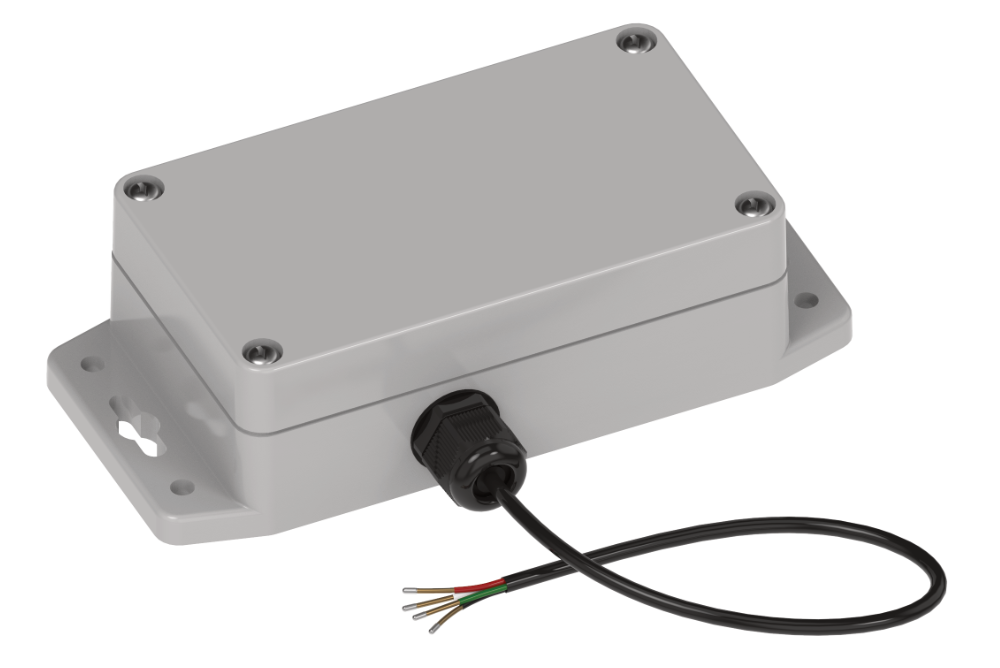Connect Third-party Sensors to LoRaWAN® With a Dry Contact Bridge
Today, we have many long-range, low-cost wireless sensor devices at our disposal that enable us to create efficient Internet of Things (IoT) networks. With such devices, we can take advantage of disruptive wireless technology to automate the flow of information between independent, internet-enabled devices. The IoT has implications for next-generation cities, building security, medical device monitoring, industrial manufacturing, and more.
The challenge now lies in understanding how to deploy these sensors effectively to maximize ROI and minimize expenses. There are many strategies when it comes to choosing the right wireless standard for your business, as well as picking the best sensors for your needs.
Fortunately, you can connect low-cost, off-the-shelf sensors that have nothing more than dry contact outputs directly to your LoRaWAN® network. Integrating these devices into your IoT networks is easier than ever before due to the dry contact LoRaWAN bridge available from Radio Bridge, a MultiTech brand.
What are Contact Sensors?
To put it simply, contact sensors send signals when they detect connectivity between two wires. The word “dry” in the context of contact sensors means that there is no current flowing between the contacts.
A dry contact sensor will generate a small amount of current if the wires are shorted. Therefore, if the contact already has active electrical current, the device will not operate properly. Fortunately, most sensors with contact outputs behave in this manner.
Initially, contact sensors were developed for security systems and smart home applications. The devices have since evolved and are now used in many ways. Today’s low-power contact sensors can last for years on a single battery charge, saving organizations time and money on ongoing maintenance.
They are valuable in both indoor and outdoor environments, and some models can handle harsh conditions, such as extreme temperatures or dangerous weather.


APPLICATIONS FOR DRY CONTACT SENSORS IN LORAWAN NETWORKS
Operators, facility managers, and manufacturers use wireless sensors for many purposes. By creating IoT networks with these devices, operators can automate the flow of information from hundreds of sensors to cloud-based processors.
With Radio Bridge’s dry contact sensor, operators can turn outputs from third-party wired sensors into LoRaWAN messages, the leading LPWAN standard. There are numerous use cases and implications for such functionality.
For example, PIR motion sensors that use dry contact outputs can help security leads monitor large facilities or industrial buildings. Our dry contact device will pick up when the wires in these sensors are shorted (i.e. movement is detected) and send alerts across LoRaWAN instantly. As a result, security leads can reallocate personnel to more complex, abstract tasks and trust our bridge to carry PIR dry contact outputs as needed.
Our dry contact sensor can also integrate with gas leak detectors that use dry contact relay outputs. Facility managers can connect third-party propane alarms, carbon monoxide detectors, and more to LoRaWAN with our dry contact bridges. Consequently, these battery-powered devices can enable smart building networks across any geography.
Smoke detectors with dry contact relay capabilities can also become LoRaWAN sensors when used with our wireless bridge. Emergency response teams can install dry contact smoke detectors wherever there may be risk of fire or smoke. Industrial plant managers can monitor processes involving extreme heat on an ongoing basis in an automated fashion.
There are also wireless inclinometers that use dry contact relays to signal when objects change slope or tilt. Operators can install these devices on equipment or machinery that they want to watch closely.
For example, aircraft or boat manufacturers could install inclinometers as a safety precaution in their vehicles. Slope changes beyond specified thresholds would cause Radio Bridge dry contact sensors to transmit alerts via LoRaWAN messaging.
Warehouse operators could also install wireless tilt sensors on industrial bay doors that send “open” and “close” messages over LoRaWAN throughout the day. Surveillance teams could cross-reference the inputs with expected imports or exports and ensure that deliveries occur according to schedule.
With our dry contact sensor, it’s also easy to connect differential pressure sensors with dry contact outputs to LoRaWAN. Pressure switches are valuable for monitoring fluid flow through industrial pipes or weight on commercial elevators. Operators could install these devices on pressure-sensitive mats that trigger door openings in factory environments.
Pneumatic pressure sensors with dry contact outputs can also be connected directly to LoRaWAN with Radio Bridge for applications involving pressurized air. Operators can track pressurized gas flow in tubes for propulsion systems over their LPWAN networks and take advantage of smart manufacturing.
Operators can also connect off-the-shelf level sensors to LoRaWAN with our dry contact device. Level sensors can measure liquid, powder, and other bulk materials in industrial tanks. Consequently, facility managers can automate LoRaWAN notifications that indicate minimum or excess volumes of whatever materials they aim to track.
Those who use our dry contract bridges in conjunction with cost-effective sensors can save their organizations significant time and capital on network developments. Additionally, they can protect people and valuable assets in an automated fashion depending on the specific application. The return on investment is undeniable, especially for organizations that would otherwise need to purchase expensive LPWAN-specific contact sensors.
CONNECT THIRD-PARTY CONTACT SENSORS TO LORAWAN WITH RADIO BRIDGE
Typically, off-the-shelf contact sensors report binary detected versus not detected signals rather than capture actual measurements. At Radio Bridge, our contact sensors detect these signals in a binary fashion as well and then relay outputs directly to LoRaWAN receivers for processing.
Instead of purchasing expensive, LPWAN-specific devices, operators can integrate any off-the-shelf sensors with contact outputs into their IoT networks with Radio Bridge products. We design and manufacture sensors for many sectors that can flexibly integrate with existing architecture. With our wireless devices, build reliable, seamless, and efficient sensor-to-cloud solutions.
To learn more about how our products can enable your unique IoT contact sensors networks, contact us today.
SENSORS THAT CAN BE CONNECTED THROUGH A DRY-CONTACT BRIDGE
- Wireless powder level sensor
- Wireless bulk level sensor
- Wireless pneumatic pressure sensor
- Wireless smoke detector
- Wireless tilt sensor
- Wireless window sensor
- Wireless differential pressure sensor
- Wireless door sensor
- Wireless inclinometer
- Wireless gas leak detector
- Wireless PIR motion sensor
- Wireless liquid level sensor

